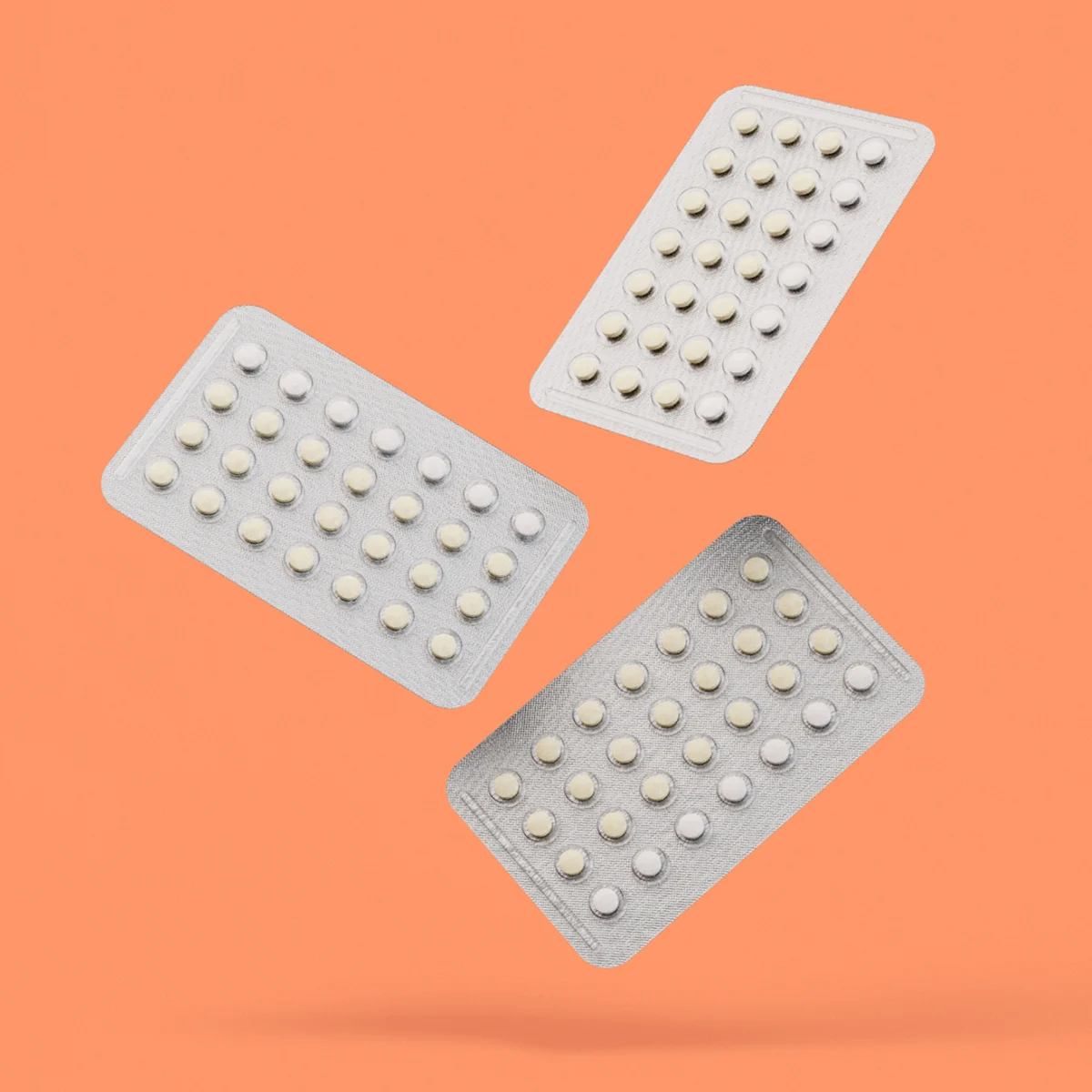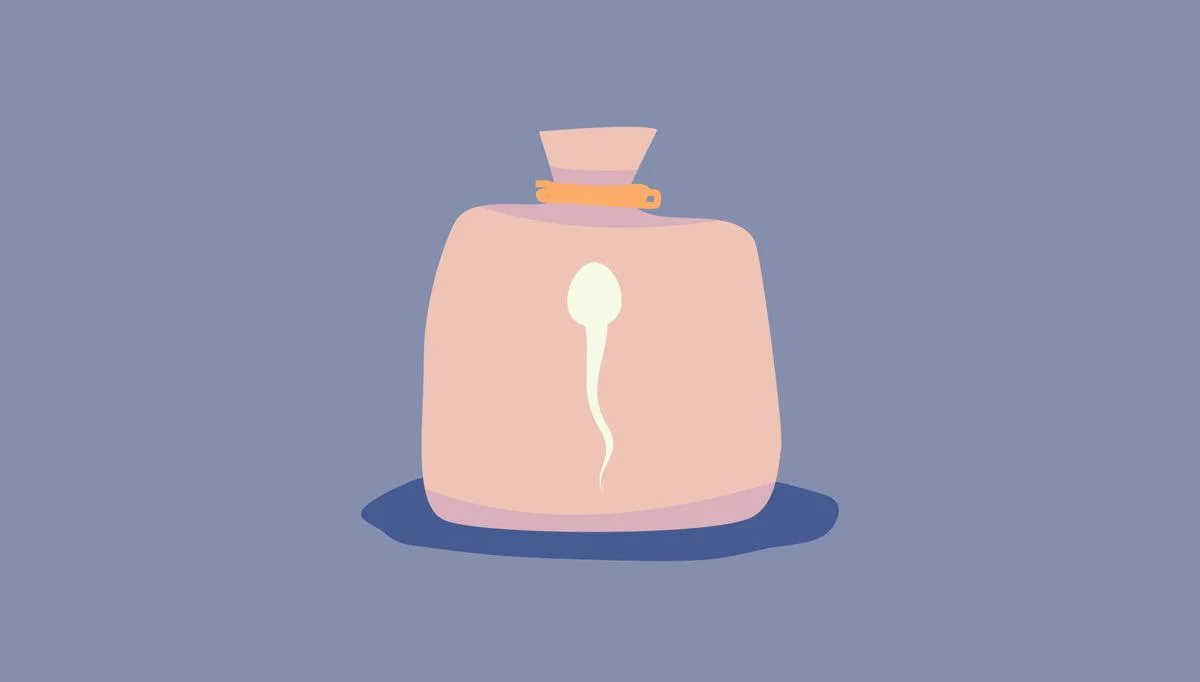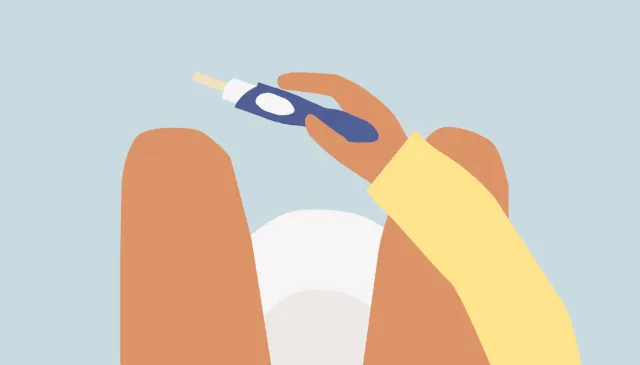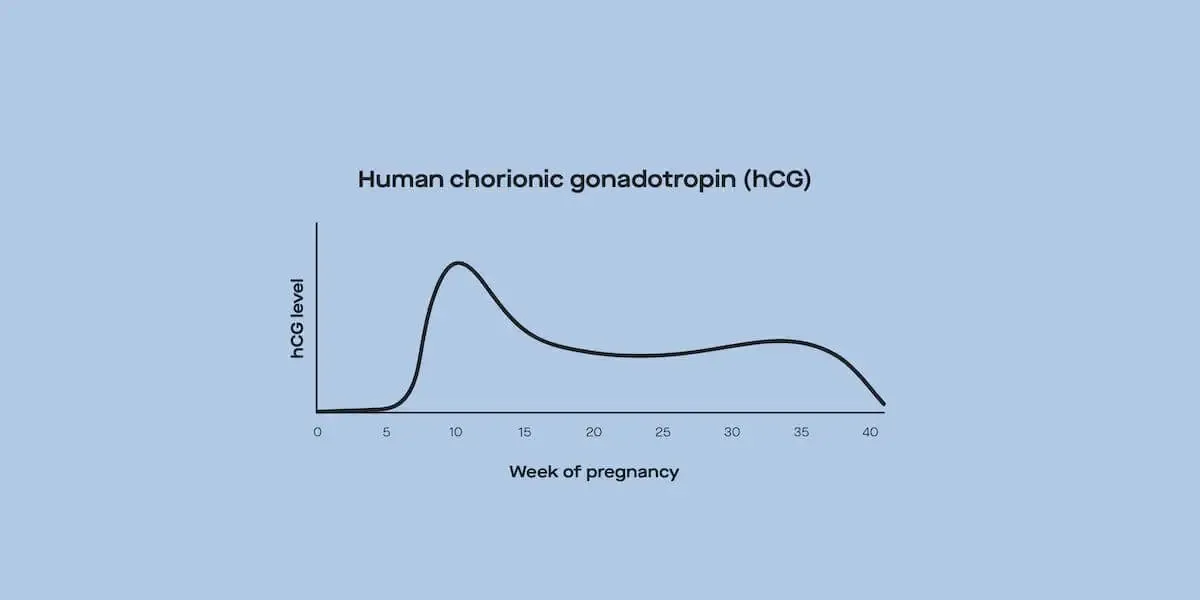Low dose birth control: options and benefits

Reviewed by Yael Cooperman, MD, Ro,
Written by Caitlin Knudsen, RN, BSN
last updated: Jun 27, 2021
6 min read
Here's what we'll cover
Most hormonal birth control prescribed today is considered low dose, and there are even long-term options if you don’t want to take a pill every day.
Birth control isn’t limited to pills at all. There are vaginal rings, arm implants, patches, intrauterine devices (IUDs), and even non-hormonal options too. In general, birth control is safe and effective for preventing pregnancy and reducing the length, amount of bleeding, and discomfort that can come with your period.
Here’s everything you need to know about the benefits of low dose birth control pills, how to get started, and what options might be best for you.
Benefits of low dose birth control
Low dose birth control contains much lower doses of hormones than the birth control options of 60 years ago.The first birth control pills became available in 1960. They were the first of their kind and a game-changer; with the pill, women had family planning in the palm of their hand.But as use of these pills expanded, it became clear that the dosages prescribed carried risks of serious side effects like blood clots. Luckily, researchers found that lower doses of the hormones could offer the same contraceptive benefits with much lower risk (Liao, 2012).Out of all the options for contraception, birth control pills are still one of the most popular. Besides being easy to take and available in a pack that slips into your purse, they have benefits for your health, too.
Some of the side effects of birth control women enjoy include (Liao, 2012):
Lighter, shorter periods or no period at all, depending on the type and dose of contraceptive.
Reduced risk of ovarian or uterine cancer
Reduced pain during periods
Less acne
When used perfectly, which means you take your birth control at roughly the same time each day and do not miss any doses, birth control pills are 99% effective in preventing pregnancy.
With typical use, which means you may occasionally miss a pill or two, they’re closer to 92% effective. That means that nine women out of 100 using the pill over the course of a year will get pregnant (Horvath, 2018).
Depending on your reason for taking low dose birth control, different options have different benefits, and your healthcare provider can help you find the best option for you.
What are your options for low dose birth control?
Low dose birth control pills come as a combination pill, which contains a form of estrogen and synthetic progesterone (progestin), or the progestin-only “mini pill.”
The combination pills usually contain under 35 mcg of estrogen and varying amounts of progestin (Horvath, 2018). These pills are available under many different brand names, such as Yaz, Yasmin, Loestrin Fe, and Ortho-Novum.
The mini pill, on the other hand, only contains progestin. Women who are breastfeeding or anyone with a history of blood clots, as well as cigarette smokers over the age of 35 should not take estrogen as this can increase your risk of blood clots so progesterone-only birth control may be a better choice (Delgado, 2020; Dulicek, 2018).
There’s a reason that people don’t choose progestin-only pills right off the bat, though. Without estrogen, you may notice more breakthrough bleeding (which is bleeding in between periods).
Because of the way progestin-only pills work, you need to be really good at taking them at the same time every day, even more so than combination pills. Missing a dose can put you at higher risk of pregnancy than estrogen-containing options (Horvath, 2018).
Who can’t take estrogen-based contraceptives?
Women who are breastfeeding, have a history of certain cancers, or have blood clotting disorders should not take combination birth control pills.Some women are unable to take estrogen-based contraceptives, and sometimes that’s a temporary situation, and other times it’s lifelong because of health conditions. Let’s start with temporary reasons certain women may need to use progestin-only or non-hormonal contraceptive options.Estrogen plays a role in the development of breast tissue and helps produce milk during the postpartum period. Because of estrogen’s effect on the breasts and potentially on milk supply, breastfeeding women should avoid combination pills that include estrogen (Delgado, 2020). For women with certain health conditions, combination pills are not the best option.The risk of cardiovascular side effects like blood clots or stroke is low with progestin-only pills but is a risk with combination pills containing estrogen. For that reason, people with a history of blood clots, stroke, or blood clotting disorders like Factor V Leiden Syndrome should avoid combination pills (Dulicek, 2018).Additionally, women with a history of estrogen-receptor-sensitive cancers should avoid hormonal contraceptives containing estrogen, including breast, endometrial, and ovarian cancer (Delgado, 2020). Whether you use a combination pill or a progestin-only pill, you will still be able to prevent pregnancy. Still, it’s essential to understand how to get started so that you can have a good experience with your birth control.
How does low dose birth control work?
To understand how low dose birth control works, let’s do a quick refresher about your menstrual cycle. Your menstrual cycle is essentially a hormonal process your body goes through monthly to prepare for pregnancy.
How does the menstrual cycle work?
Day one of your menstrual cycle kicks off with the start of your period and is called the follicular phase. During this phase, your body sheds your uterine lining, which you experience as cramping and bleeding during your period, and then starts preparing your uterus for a possible pregnancy.
Think of your period like spring cleaning, and the rest of the follicular cycle like getting your spare bedroom ready for guests. In this case, your uterus is the spare bedroom. At the end of the follicular phase, you ovulate.
When you ovulate, your ovaries release an egg, which travels down your fallopian tube, where it may encounter sperm. If sperm travels through your cervix, into your uterus, and up your fallopian tubes, it can fertilize the egg, which then becomes an embryo that can settle into your uterus to develop into a fetus.
After you ovulate, your body then goes into the luteal phase of your menstrual cycle, during which you have an increase in the amount of progesterone circulating in your body in preparation for pregnancy. If that pregnancy doesn’t happen, progesterone starts to drop, you get your period, and the cycle starts over.
A typical menstrual cycle is about 28 days, but every woman is different and menstrual cycles can range from 24-38 days in length. The two main hormones that your body releases during your menstrual cycle are estrogen and progesterone, and they have different but complementary roles in preparing your body for pregnancy.
Both estrogen and progesterone prepare the uterus to be a comfortable home for an embryo (Britton, 2020).
How does low dose birth control affect your period?
When you take low dose birth control, you’re taking either estrogen and progestin, a synthetic form of progesterone, or a progestin-only option (Britton, 2020).
Progestin is the primary player in pregnancy prevention. When you take progestin, your body prevents ovulation, thickens cervical mucus, makes fallopian tube travel harder, and makes it more difficult for an embryo to implant in your uterus. Estrogens, on the other hand, prevent breakthrough bleeding and block ovulation so that your ovaries don’t release eggs (Britton, 2020).
When it comes to preventing pregnancy, it takes about a week of consistent use for hormonal birth control pills to do their job; in the meantime, use a backup method of birth control, such as condoms to prevent pregnancy. You can start birth control at any time during your menstrual cycle, as long as you’re not pregnant (Edwards, 2020).
Despite its many benefits, low dose birth control does not protect against sexually transmitted infections (STIs) (Horvath, 2018). You’ll need a condom or other form of barrier protection to protect against STIs. While generally safe and effective, low dose birth control can have some side effects.
What are the side effects of low dose birth control?
Though hormonal contraceptive use is generally well tolerated, side effects do occur (McKetta, 2018). Some people experience:
Irregular bleeding
Headache
Breast tenderness
Nausea
Mood changes
Many women experience mood changes when taking combination hormonal contraception, but the research has yet to establish a clear relationship between this medication and depression symptoms in particular (McKetta, 2018).
Some people find that certain brands or hormone combinations work better for them. A trial and error system is a good option to learn about which option is the best for you. And if you find low dose birth control isn’t the best option for you, there are lots of non-hormonal options to choose from.
What are the alternatives for low dose birth control?
If low dose birth control isn’t the best option for you, there are multiple non-hormonal methods to choose from.
The copper IUD, Paraguard, does not contain any hormones but still prevents pregnancy. Unlike birth control pills you need to see a healthcare professional to have it inserted or removed making it a good option for a person not looking to get pregnant in the near future.
If you’d like a shorter-term option, you can use a diaphragm. These simple devices come in a few different sizes and can be placed before sex to prevent pregnancy. You’ll need a prescription from your provider to get one. If you have a partner with a penis, they can use condoms to help prevent pregnancy and protect against STIs.
Some women choose to use the fertility awareness method to track their ovulation cycles and avoid intercourse during fertile windows or use protection such as condoms during this time.
However, this method isn’t reliable. Fertility awareness is only 76% effective at preventing pregnancy, and even if you know when you ovulate, you can get pregnant anytime during your menstrual cycle (Britton, 2020).
For birth control options with higher efficacy rates, consider low dose birth control. You can try combination pills or progestin-only options, and there are many different brands and dosages of each to choose from. Low dose birth control comes with fewer risks than the original birth control pills, but with the same family planning benefits.
DISCLAIMER
If you have any medical questions or concerns, please talk to your healthcare provider. The articles on Health Guide are underpinned by peer-reviewed research and information drawn from medical societies and governmental agencies. However, they are not a substitute for professional medical advice, diagnosis, or treatment.
Benagiano, G., Gabelnick, H., & Brosens, I. (2015). Long-Acting Hormonal Contraception. Women’s Health , 749–757. doi:10.2217/whe.15.68. Retrieved from https://journals.sagepub.com/doi/10.2217/whe.15.68?url_ver=Z39.88-2003&rfr_id=ori:rid:crossref.org&rfr_dat=cr_pub%20%200pubmed#articleCitationDownloadContainer
Britton, L. E., Alspaugh, A., Greene, M. Z., & McLemore, M. R. (2020). CE: An Evidence-Based Update on Contraception. The American Journal of Nursing , 120 (2), 22–33. doi:10.1097/01.NAJ.0000654304.29632.a7. Retrieved from https://www.ncbi.nlm.nih.gov/pmc/articles/PMC7533104/
Delgado, B.J. & Lopez-Ojeda, W. Estrogen . (2020 Aug 24). StatPearls [Internet]. Retrieved March 31, 2021 from https://www.ncbi.nlm.nih.gov/books/NBK538260/
Dulicek, P., Ivanova, E., Kostal, M., Sadilek, P., Beranek, M., & Zak, P. et al (2018). Analysis of Risk Factors of Stroke and Venous Thromboembolism in Females With Oral Contraceptives Use. Clinical and Applied Thrombosis/Hemostasis , 24 (5), 797–802. doi:0.1177/1076029617727857. Retrieved from https://www.ncbi.nlm.nih.gov/pmc/articles/PMC6714869/
Edwards M. & Can, A.S. Progestin . (2020 Nov 29]. StatPearls [Internet]. Retrieved March 31, 2021 from https://www.ncbi.nlm.nih.gov/books/NBK563211/
Horvath, S., Schreiber, C.A., & Sonalkar, S. Contraception . [2018, Jan 17]. Endotext [Internet]. Retrieved March 31, 2021 from https://ww w.ncbi.nlm.nih.gov/books/NBK279148/
Liao, P. V., & Dollin, J. (2012). Half a century of the oral contraceptive pill: historical review and view to the future. Canadian Family Physician , 58 (12), e757–e760. Retrieved from https://www.ncbi.nlm.nih.gov/pmc/articles/PMC3520685/
McKetta, S., & Keyes, K. M. (2019). Oral contraceptive use and depression among adolescents. Annals of Epidemiology , 29, 46–51. doi:0.1016/j.annepidem.2018.10.002. Retrieved from https://www.ncbi.nlm.nih.gov/pmc/articles/PMC6349422/
Medline Plus. (2015, September 15). Estrogen and Progestin (Oral Contraceptives). Retrieved on March 31, 2021 from https://medlineplus.gov/druginfo/meds/a601050.html#how
Weill, A., Dalichampt, M., Raguideau, F., Ricordeau, P., Blotière, P. O. & Rudant, J. et al (2016). Low dose oestrogen combined oral contraception and risk of pulmonary embolism, stroke, and myocardial infarction in five million French women: cohort study. BMJ , 353, i2002. doi:0.1136/bmj.i2002. Retrieved from https://www.ncbi.nlm.nih.gov/pmc/articles/PMC4862376/










